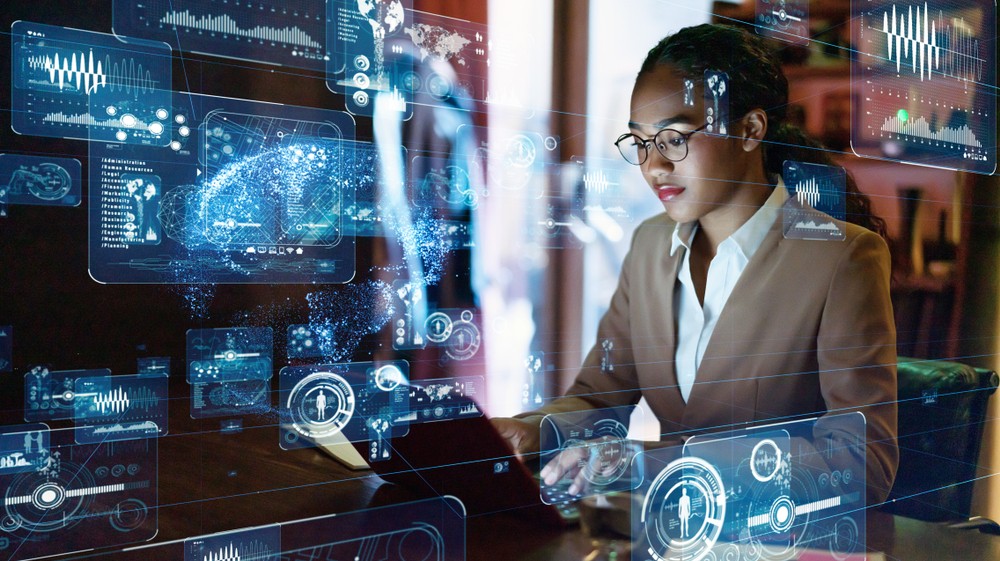Heard this one? “The modern business landscape is experiencing unprecedented change” - I would adjust that slightly. It happened, we blinked and there it was. The knock-on effect is that this created a workforce readiness gap that poses challenges for employers. This gap leaves organisations without the essential talent and skill sets needed to drive revenue and maintain market competitiveness. In response, forward-thinking companies are intensifying their focus on upskilling and reskilling initiatives, however, identifying effective strategies to bridge this gap remains a complex task.
To address this workforce readiness gap employers typically deploy a variety of strategies. These include forging internal and external partnerships, offering vocational training and professional certifications, implementing apprenticeship programmes, providing online courses, facilitating mentorship opportunities, encouraging job rotation and partnering up on projects with educational institutions. Despite these efforts many learning, and development (L&D) initiatives fall short. Their one-size-fits-all approach often fails to address the specific needs of individual organisations and industries, and crucially, overlooks the diverse learning styles and growth patterns of employees.
In a time where an employees’ skills are expected to continuously evolve, a more nuanced and tailored approach to L&D has become imperative, particularly for enterprise organisations seeking to cultivate a wide range of skills across various departments and functions. The advent of artificial intelligence (AI) presents a promising solution to this challenge. By leveraging AI-powered development programmes, companies can create intelligent, personalised, development opportunities that connect employees with bespoke learning opportunities.
Key Challenges in Closing the Skills Gap
The evolution of the workforce is marked by its non-linear nature, with emerging technologies, shifting job requirements and economic volatilities continually reshaping the modern workplace. With research showing that high-performing organisations are proactive and can adapt to new methods of learning, a dynamic approach has never been more vital. However, to achieve this, employers must address three primary challenges:
Skills: The swift integration of AI across sectors has fundamentally altered job roles and expectations, leading to the gradual depreciation of employees’ existing skill sets.
Expectations: There's a growing demand from the workforce for robust development opportunities. In the absence of such initiatives, organisations risk losing valuable talent.
Visibility: Employers require comprehensive insights into their employees’ current capabilities and areas needing development. This workforce data is crucial for informed, strategic talent management decisions. While the concept of workforce readiness is not new, its current interpretation requires a broader perspective.
Fostering Workforce Agility Through AI-Driven Upskilling
AI-driven skilling offers a comprehensive approach to workforce development. By identifying organisational skills gaps and personalising learning pathways for employees, this data-centric strategy ensures that staff are equipped with the precise skills needed to excel in their roles. Additionally, it generates ongoing, valuable insights for employers, facilitating continuous workforce optimisation.
As the skills landscape and business imperatives continue to evolve, there’s growing emphasis on focus on cultivating agile workforces. Workforce agility refers to the capacity of employees to effectively respond and adapt to change. It is characterised and measured by the ability to proactively anticipate and address change-related challenges in a dynamic, ever-changing environment. The process of upskilling employees extends beyond bridging the workforce readiness gap; it's about developing an agile workforce capable of adapting to future changes, however unpredictable. Given that 39% of employees lack confidence in their employers' adaptability to changing conditions, there’s a clear need for companies to invest in programmes and training initiatives that can demonstrate otherwise.
Fostering an environment to promote workforce agility begins with a commitment to upskilling and reskilling employees. Employers can cultivate a future-ready workforce by combining traditional methods such as hands-on learning, observational techniques, constructive feedback and stretch assignments with AI-driven personalised learning paths. This holistic approach not only equips employees with the skills necessary to flourish within the organisation, but also prepares them to navigate the broader ever-changing job market.
The Benefits of AI-Powered Skill Development
Leveraging AI through improved learning and development can effectively narrow the skills gap, tailor outcomes to the person and foster organisational growth. Key advantages include:
Increasing revenue and productivity while reducing risk: Customising learning and development programmes to address the specific skills requirements both the organisation and individual employees enhances productivity and accelerates innovation — helping go to market with products and services faster. Moreover, comprehensive training programmes mitigate various business risks such as compliance requirements, information technology (IT) security best practices and safety practices —areas which, if mismanaged, could prove detrimental to the organisation.
Building customer retention and satisfaction: A workforce that is adaptable, motivated, and experienced invariably translates to superior quality in services and products. Employees who are well-prepared and continuously upskilled are better equipped to deliver exceptional customer outcomes through their enhanced knowledge base, adept problem-solving skills, refined communication abilities, and improved efficiency.
Target and predict employee retention: Richard Branson is famously quoted as saying “take care of your employees and they’ll take care of your business”. Part of that is early intervention. AI will help with predictive analytics and turnover predictions. AI algorithms can analyse large amounts of employee data to predict potential turnover risks before they occur. By identifying patterns and common traits among employees who left in the past, AI can proactively flag employees who may be at risk of leaving. This allows companies to intervene early with targeted retention efforts.
As we navigate an era of unprecedented technological advancement and shifting workforce dynamics, organisations face a critical imperative to prioritise employee development. With unemployment at historic lows, employees wield significant influence over their careers, favouring companies that demonstrate a genuine commitment to their growth.
Simultaneously, the rapid proliferation of AI technologies calls for a proactive approach to skill development. With full acknowledgement of the irony, the solution lies in embracing the very technology driving this change. By leveraging AI to craft personalised learning experiences, organisations can effectively bridge the workforce readiness gap while fostering a culture of continuous innovation. This not only addresses immediate skills shortages but also cultivates a more agile, engaged, and future-ready workforce.






